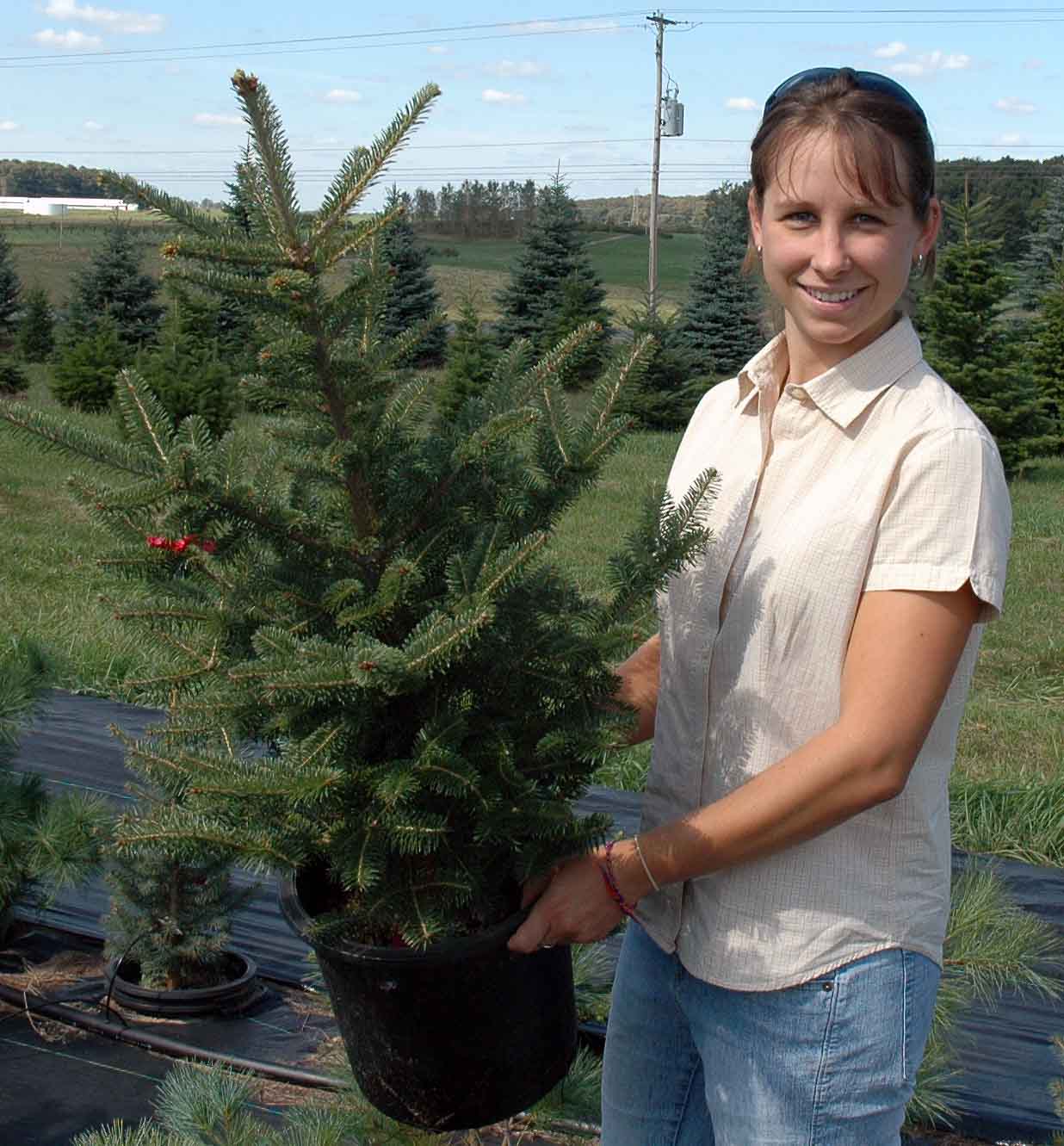Among the many hats I wear, one of the most enjoyable is that of an Extension Specialist working with Christmas tree growers here in Michigan and surrounding states. I suppose part of the satisfaction stems from the fact that my first real job was shearing Christmas trees in southwest Washington during my high school summers. To give you an idea how long ago this was, the minimum wage when I started the summer between my sophomore and junior years was $2.20 per hour.
Today I’m involved in a variety of projects related to improving sustainability of Christmas tree production, particular water and nutrient management. One of our major focus areas has been the development of container production systems for living Christmas trees. For those not familiar with the concept, living Christmas trees are conifers that are sold with their roots intact as opposed to a cut Christmas tree. Living Christmas trees serve a niche market for people that think cutting a Christmas tree is wasteful or even harmful to the environment (never mind that virtually every Christmas tree cut in the US was grown on a plantation for that express purpose). Many Christmas tree growers have sold living trees by digging trees from their fields and selling them balled and burlapped or placing them in containers. In our current work we’ve focused on growing several species of conifers as container stock with the end goal as living Christmas trees. Container growing imparts a couple of advantage over the B&B method. First, container-growing eliminates loss of roots associated with field digging. Second container-grown trees are much lighter weight for consumers to handle than field-dug trees. Also, we have found the container-grown trees survive post-holiday storage and transplanting better than field-dug trees.

My former grad student, Wendy Klooster, shows off one on the Fraser firs she grew as part of her MS project on nutrient management.
If you’re considering a living Christmas tree here are some things to keep in mind.
- If your ultimate goal is to plant the tree in your landscape, make sure the tree is a species that’s hardy in your location. There are several types of container-grown conifers such as Italian stone pine (Pinus pinea) sold in big box stores and super markets that are hardy in only the warmest parts of the country.
- Limit display of living trees to 10 days to two weeks. Most conifers will begin to lose dormancy shortly after being brought indoors. We’ve observed that some, such as Black hills spruce (Picea glauca var. densata), will break bud if the weather has been cold and they’ve had sufficient chilling.
- After the holidays, place the living tree in a protected but unheated space such as a garage or enclosed porch or patio. The key here is that the tree needs some exposure to light – but avoid direct sun.
As with just about everything these days, the environmental friendliness of Christmas tree production is receiving increasing scrutiny. One way to have the ‘greenest’ tree on the block is to bring home a tree that keeps on giving.